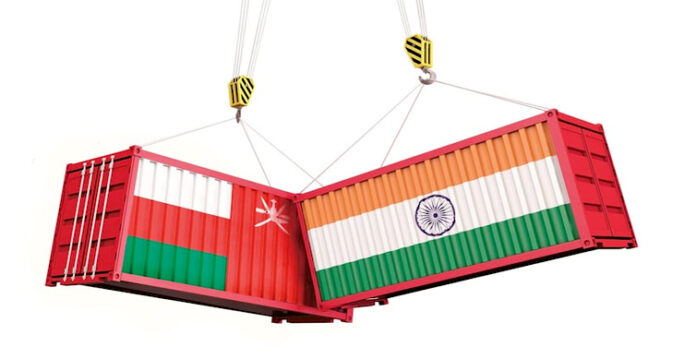India’s trade relationship with Oman is poised to undergo a significant transformation, with both countries now focusing their efforts on advancing the proposed Free Trade Agreement (FTA). The latest discussions between India’s Commerce and Industry Minister Piyush Goyal and Oman’s Minister of Commerce, Industry and Investment Promotion Qais bin Mohammed Al Yousef, held in Muscat on January 28, 2025, mark a pivotal moment in strengthening the economic ties between the two nations.
The proposed agreement, officially termed the Comprehensive Economic Partnership Agreement (CEPA), is designed to enhance trade and investment flows between India and Oman. In essence, the CEPA aims to significantly reduce or eliminate customs duties on a broad range of goods traded between the two countries, ease regulations surrounding services, and create a more attractive environment for investments. These are the core elements of any FTA, and India and Oman are working to create a framework that supports these goals.
As trade ministers review the progress of these negotiations, there is a sense of urgency. While the fifth round of talks was held just a few weeks ago, in mid-January 2025, the commitment to finalizing the deal is palpable. This is underscored by the fact that India’s bilateral trade with Oman, though significant, has been declining. In 2023-24, the bilateral trade dropped to USD 8.94 billion from USD 12.39 billion in 2022-23. Such a decline signals the need for a revamped trade agreement that can help both nations tap into their full economic potential.
Also Read: India and UAE hail growing momentum in bilateral cooperation
India’s trade with Oman is already vital, particularly in energy. Oman is the third-largest export destination among the Gulf Cooperation Council (GCC) countries for India, and India’s key imports from Oman are petroleum products and urea, which account for over 70% of the total imports. Other important imports include chemicals, propylene and ethylene polymers, pet coke, and gypsum. However, the reduction in trade volume is a clear signal that the existing framework is no longer sufficient to support the growing economic ambitions of both countries.
The negotiations for the CEPA, which formally began in November 2023, hold the promise of revitalizing these trade flows and taking them to new heights. While the agreement with Oman is still in its early stages, India’s experience with a similar agreement with the UAE, which came into effect in May 2022, serves as a useful reference point. The India-UAE CEPA has already proven successful, providing a blueprint for what could be achieved between India and Oman.
It is important to note that agreements like the CEPA do more than just increase trade—they also foster deeper economic integration. They create opportunities for collaboration in sectors like infrastructure, energy, and technology, paving the way for more diversified partnerships. This is especially critical in the post-pandemic global economy, where nations are increasingly looking inward to ensure self-sufficiency but are simultaneously recognizing the importance of strong international partnerships.
The key challenge, however, lies in addressing the complexities involved in such agreements. There are concerns regarding the implementation timelines and the ability of both countries to swiftly remove trade barriers while maintaining economic sovereignty. The negotiations must ensure that the deal’s terms reflect both nations’ priorities, including India’s desire for increased access to Omani markets, especially for its skilled workforce and services, and Oman’s need for greater investment in infrastructure and technology.
India’s emphasis on reducing tariffs and facilitating cross-border investments aligns with its broader economic strategy. The country has long aimed to strengthen its economic relationships with the Gulf nations, which are crucial for both trade and energy security. Oman, too, stands to gain significantly from this deal, not just through enhanced trade, but by securing stronger ties with a rapidly growing economy like India.
As both sides continue their deliberations, there is a need to ensure that this deal, once finalised, benefits not just large corporations but also smaller businesses and entrepreneurs who can thrive in a more open, regulated trading environment. The CEPA offers the possibility of a future where both nations can leverage their strategic geographic locations, their rich natural resources, and their emerging industrial capabilities for mutual growth.
In conclusion, the potential India-Oman Free Trade Agreement represents a forward-looking approach to international trade and diplomacy. While challenges remain, the intent and direction set by both governments are clear. The CEPA could prove to be a game-changer for both countries, allowing them to expand their economic horizons and build a more resilient, diversified, and interconnected future. The continuing talks and negotiations will be crucial in ensuring the agreement reflects the dynamic needs and aspirations of both India and Oman in the coming years.
(This story is sourced from a third-party syndicated feed. Raavi Media takes no responsibility or liability of any nature. Raavi Media management/ythisnews.com can alter or delete the content without notice for any reason.)


